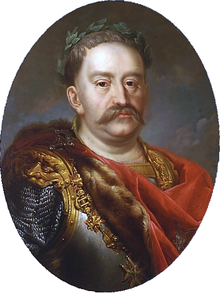An excellent film, in terms of historical accuracy of major events and portrayal of the period. One feels the power of the Sultan as well as the incompetence of the Christians, except at the last moment. Sort of like the old silent Westerns where the heroine is tied up, laying on the railroad track and saved at the last moment.
If you watch the beginning, the middle, and the end with judicious skipping, you will get most of the story in a most graphic fashion. Kara Mustafa Pasha, the Turkish commander, is somewhat idealized. It must be remembered that most military leaders in high places killed hundreds of people in warfare and caused the deaths of untold thousands. Still, he makes a grand figure in the film.
https://en.wikipedia.org/wiki/Kara_Mustafa_Pasha
gp: Renzo Martinelli is an extraordinary film producer. In this film, he portrays Kara Mustafa. Renzo Martinelli Website
סנהדרין נב עמוד ב בסוף הסרט @1.44
Marco d’Aviano

Marco d’Aviano (November 17, 1631 – August 13, 1699) was a Capuchin friar. His real name was Carlo Domenico Cristofori; his birthplace Aviano, a small community in the Republic of Venice (Italy). From an early age, he felt attracted to a life of devotion and martyrdom. Educated at the Jesuit College in Gorizia, at 16 he tried to reach the island of Crete, where the Venetians were at war with the Ottoman Turks, in order to preach the Gospel and convert the Muslims to Christianity. On his way, he sought asylum at a Capuchin convent in Capodistria, where he was welcomed by the Superior, who knew his family, and who, after providing him with food and rest, advised him to return home.
Inspired by his encounter with the Capuchins, he felt that God was calling on him to enter their Order. In 1648, he began his novitiate. A year later, he professed his vows and took his father’s name, Marco, becoming Fra’ Marco d’Aviano. His ministry entered a new phase in 1664, when he received the licence to preach throughout the Republic of Venice and other Italian states, particularly during Advent and Lent. He was also given more responsibility when he was elected Superior of the convents of Belluno in 1672, and Oderzo in 1674…
Among those who sought his help was Leopold I, Holy Roman Emperor, whose wife had been unable to conceive a male heir. From 1680 to the end of his life, Marco d’Aviano became a close confidant and adviser to him, providing the irresolute and often indecisive emperor with guidance and advice for all problems, political, economic, military or spiritual. His forceful, energetic and sometimes passionate and fiery personality proved a good complement for Leopold’s Hamlet-like tendency to allow endless doubts and scruples to paralyse his capacity for action. As the danger of war with the Ottoman Turks grew near, Marco d’Aviano was appointed by Pope Innocent XI as his personal envoy to the Emperor. An impassioned preacher and a skillful mediator, Marco d’Aviano played a crucial role in resolving disputes, restoring unity, and energizing the armies of the Holy League, which included Austria, Poland, Venice, and the Papal States under the leadership of the Polish king Jan III Sobieski. In the decisive Battle of Vienna (1683), the Holy League succeeded in inflicting a defeat on the invading Ottoman Turks. This marked the end of the last Turkish attempt to expand their power in Europe, and the beginning of the long European counter-offensive that was to continue ultimately until the disintegration of the Ottoman Empire in 1918. This may therefore be considered one of the decisive battles of history. It also put an end to the period of Ottoman revival under the Koprulu Grand Vizirs and their protégé and successor, Kara Mustapha, who was in command of the Ottoman army at Vienna. Read More
Kara Mustafa Pasha

Battle of Vienna
In 1683, he launched a campaign northward into Austria in a last effort to expand the Ottoman Empire after more than 150 years of war. By mid-July, his 100,000-man army had besieged Vienna (guarded by 10,000 Habsburg soldiers), following in the footsteps of Suleiman the Magnificent in 1529. By September, he had taken a portion of the walls and appeared to be on his way to victory.
But on 12 September 1683, a Polish army under King Jan Sobieski took advantage of dissent within the Turkish military command and poor disposition of his troops, winning the Battle of Vienna with a devastating flank attack led by Sobieski’s Polish Winged Hussars. The Turks retreated into Hungary, leaving the kingdom for retaking by the Austrians in 1686.
The defeat cost Mustafa his position, and ultimately, his life. On 25 December 1683, Kara Mustafa was executed in Belgrade at the order of Mehmed IV. He suffered death by strangulation with a silk cord, which was the method of capital punishment inflicted on high-ranking persons in the Ottoman Empire. His last words were, “Am I to die?” and “As God pleases.”[4] Read More
John III Sobieski
John III Sobieski (Polish: Jan III Sobieski, Lithuanian: Jonas Sobieskis; 17 August 1629 – 17 June 1696), from 1674 until his death King of Poland and Grand Duke of Lithuania, was one of the most notable monarchs of the Polish–Lithuanian Commonwealth.
Sobieski’s military skill, demonstrated in wars against the Ottoman Empire, contributed to his prowess as King of Poland. Sobieski’s 22-year reign marked a period of the Commonwealth’s stabilization, much needed after the turmoil of the Deluge and the Khmelnytsky Uprising.[1] Popular among his subjects, he was an able military commander, most famous for his victory over the Turks at the 1683 Battle of Vienna.[2] After his victories over them, the Ottomans called him the “Lion of Lechistan“; and the Pope called him the savior of Christendom.[3]
Siege of Vienna 1683 (Documentary)
The internet offers us a choice – between Art and straight history (Documentary) – the question here is how do we learn about an historical subject best? I let the viewer decide:
